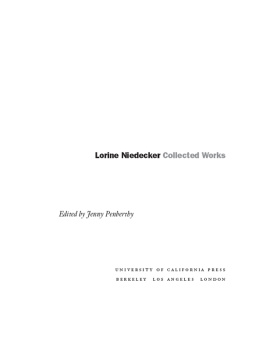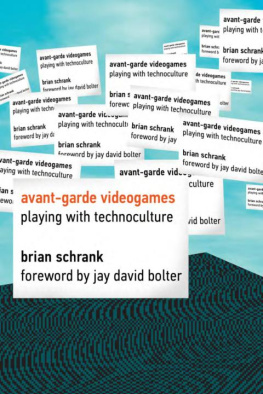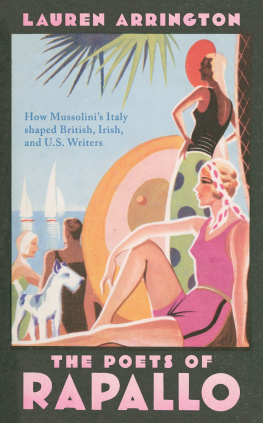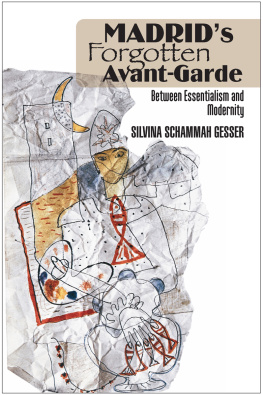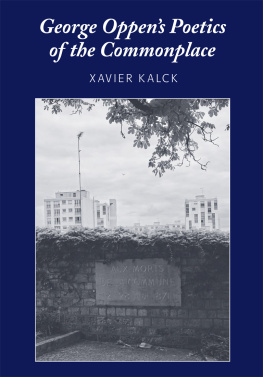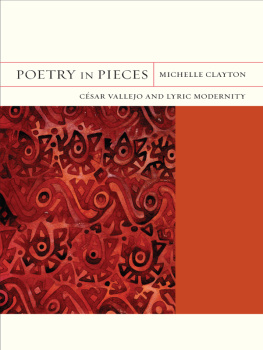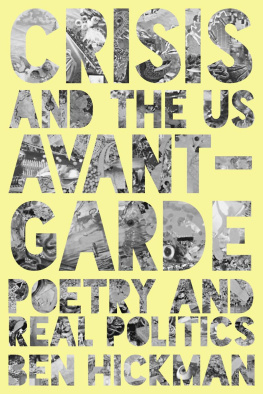The
Zukofsky
Era
HSM Hopkins Studies in Modernism
Douglas Mao, Series Editor
The
Zukofsky
Era
Modernity, Margins,
and the Avant-Garde
Ruth Jennison

2012 The Johns Hopkins University Press
All rights reserved. Published 2012
Printed in the United States of America on acid-free paper
9 8 7 6 5 4 3 2 1
The Johns Hopkins University Press
2715 North Charles Street
Baltimore, Maryland 21218-4363
www.press.jhu.edu
Library of Congress Cataloging-in-Publication Data
Jennison, Ruth.
The Zukofsky era : modernity, margins, and the avant-garde / Ruth Jennison.
p. cm. (Hopkins studies in modernism)
Includes bibliographical references and index.
ISBN-13: 978-1-4214-0529-2 (hdbk. : acid-free paper)
ISBN-13: 978-1-4214-0611-4 (electronic)
ISBN-10: 1-4214-0529-6 (hdbk. : acid-free paper)
ISBN-10: 1-4214-0611-X (electronic)
1. American poetry20th centuryHistory and criticism. 2. Modernism (Literature)United States. 3. Avant-garde (Aesthetics)United StatesHistory20th century. 4. Zukofsky, Louis, 19041978Criticism and interpretation. 5. Oppen, GeorgeCriticism and interpretation. 6. Niedecker, LorineCriticism and interpretation. I. Title.
PS310.M57J46 2012
811.509112dc23 2011042882
A catalog record for this book is available from the British Library.
Special discounts are available for bulk purchases of this book. For
more information, please contact Special Sales at 410-516-6936 or
specialsales@press.jhu.edu.
The Johns Hopkins University Press uses environmentally friendly
book materials, including recycled text paper that is composed of
at least 30 percent post-consumer waste, whenever possible.
For my mother, Dr. Carol Rosala Jennison
Acknowledgments
This project has benefited from generous support and wise counsel. Lyn Hejinian presided over its first stage at the University of California, Berkeley, offering her time and erudition far beyond what this pupil might have hoped for. Abdul JanMohamed and Colleen Lye were similarly giving of their time and critical acumen.
The English Department at the University of Massachusetts, Amherst, has provided a wonderful environment for the projects maturation. Each and every colleague in the department has been supportive, rigorous, and a source of tremendous advice. In particular, I would like to thank Laura Doyle for sharing the wealth of her experience and the depth of her knowledge. Peggy OBrien guided me with gentle wisdom through my transition as a new faculty member.
Beyond the walls of these academic institutions, other scholars have been indispensable in the formation of the arguments contained herein. Evidence of Barrett Wattens incisive critique and intellectual support can be spied easily throughout the text. Chapters within the manuscript also benefited from the intellectual and editorial advice of Elizabeth Willis as well as Carla Harryman. Fellow participants in the Combined and Uneven Modernisms colloquium at the University of Warwick helped me to deepen my account of capitalisms unevenness. Doug Maos profoundly keen critical eye inspired me to aim for a deeper clarity of argument.
I am grateful to Matthew McAdam, my editor at the Johns Hopkins University Press, for his endorsement of the projects potential and for his communication and advocacy throughout. David Coens sensitive editorial work made all the difference in the readability of the final product. Also, I was lucky to have Aaron Winslows assistance in the preparation of the manuscript.
Foundations and institutions have also provided vital support throughout the arc of the project. These include the University of California, Berkeley; the Andrew W. Mellon Foundation; the American Association of University Women; the Harry Ransom Center at the University of Texas, Austin; the University of Massachusetts, Amherst, Healy Faculty Research Grant; and the University of Massachusetts, Amherst, Book Subvention Program.
This book is dedicated to my uncompromisingly independent mother, Dr. Carol Rosala Jennison, who has imparted to me at least some of her signature intellectual curiosity and warm embrace of all who struggle.
The
Zukofsky
Era
Introduction
AN ERA
ANY TIME
OF YEAR
Louis Zukofsky, A22
What we are actively seeking is the true practice which has been alienated to an object, and the true conditions of practicewhether as literary conventions or social relationshipswhich have been alienated to components or mere backgrounds.
Raymond Williams
This book takes as its object of study the Depression-era works of three poets who constellated around the aesthetic nexus of Objectivism: Louis Zukofsky, George Oppen, and Lorine Niedecker. While the Objectivists treated in this book shared with the canonical modernists an interest in experiment and innovation, they also held commitments to radical democracy and the realization of the cultural potentials simultaneously unleashed and constrained by capitalist modernity, commitments that they saw as the political parallels of their artistic avant-gardism.
Objectivism provides the textual firmament for the analyses that follow. However, the methodology that underwrites these analyses is portable to the study of other avant-gardes and modernisms, diverse in their spatial and historical emergences. This book addresses the following questions: How can we establish a relationship between the spatial landscapes of capitalism in crisis and the formal choices of the revolutionary avant-garde? Is there a way to draw on the rich formalist traditions of close reading modernist poetics while also attending to the historical complexity of the situation in which modernist texts are produced? Can we energize the key concepts of materialist aestheticsthe tyranny of the commodity form; the text (and its producer) as an active mediation of a history that precedes it; the contest between the intra- and international uneven spaces of capital with which every text must engagein a methodology specific to the study of poetics, and poetic modernism in particular? These questions guide this book both in its study of Objectivism and also in its broadest ambition: the opening up of a vocabulary especially suited to articulating the origin of modernist form in the tectonic dynamism of American capitalist production of space.
To these ends, this volume reads against the grain of traditional accounts of modernist fragmentation. Prior to the recent emergence of the New Modernist Studies, literary historians and critics tended to characterize high-modernist Anglo-American poets as possessing a pessimistic perspective, of a culture in disarray, often resulting in a turn toward reactionary political solutions that were at odds with the ideals underlying these poets use of pathbreaking forms.
Objectivists challenge said notions of modernist fragmentation with a poetics whose paratactical adjacencies map what critical geographers like David Harvey identify as capitalist modernitys transnational combined and uneven developments. Parataxis, as I will show, is the formal deployment of a radical agency, wherein discrete particulars are placed side by side; textual analysis will demonstrate that paratactical construction is the signature strategy of Objectivism. Through parataxis, Objectivists investigate the correspondences, connections, and asymmetries between the historically distant and socially distinct particulars that their poems arrange. In doing so, Objectivists defamiliarize the cultural particulars they call upon; paratactical form throws into relief the historical and material specificity of each particular against that of its neighbor. To illustrate: think, for example, of the famous opening strains of Zukofskys
Next page

